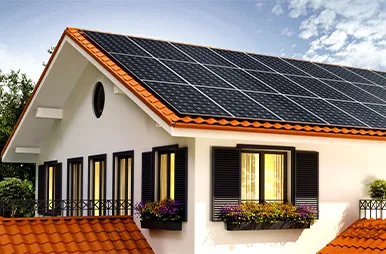Exploring the Benefits of Bifacial Mono-Perc Solar Panels for Renewable Energy Solutions
Understanding Mono-Perc Bifacial Solar Panels
As the world increasingly turns to renewable energy sources, solar power has gained significant attention for its efficiency and sustainability. Among the different technologies available, mono-PERC bifacial solar panels have emerged as one of the most advanced solutions, combining several cutting-edge features that enhance energy production. In this article, we will explore what mono-PERC bifacial panels are, how they work, and their advantages over traditional solar panels.
What Are Mono-PERC Bifacial Solar Panels?
Mono-PERC bifacial panels are a type of photovoltaic (PV) technology that utilizes both sides of the solar panel to capture sunlight and convert it into electricity. Mono refers to monocrystalline silicon, which is known for its high efficiency and attractive aesthetics compared to polycrystalline silicon. The PERC stands for Passivated Emitter and Rear Cell, a technology that improves sunlight absorption and energy conversion, making it a popular choice for high-performance solar cells. The term bifacial indicates that these panels can harness solar radiation from both the front and rear sides, significantly increasing overall energy output.
How Do They Work?
Mono-PERC bifacial solar panels consist of solar cells that feature a transparent back, allowing them to absorb sunlight that reflects off surrounding surfaces, such as ground, roofs, or even water bodies. This ability to capture sunlight from both sides means that these panels can produce more electricity in the same amount of space compared to traditional single-sided solar panels.
The performance of bifacial panels largely depends on the albedo effect—the reflectivity of the surface below them. For example, installing bifacial panels over light-colored surfaces, such as white gravel or concrete, can enhance their performance by increasing the amount of reflected sunlight they can capture.
Advantages of Mono-PERC Bifacial Solar Panels
mono perc bifacial panel

1. Increased Energy Output One of the primary benefits of mono-PERC bifacial panels is their ability to generate more electricity—up to 20% more than conventional panels. This increased output means higher efficiency and better returns on investment for solar installations.
2. Better Performance in Various Conditions Mono-PERC bifacial panels perform exceptionally well under varying weather conditions. They are less affected by shading and can utilize diffuse sunlight on cloudy days more effectively than standard panels.
3. Durability and Longevity These panels are often designed with improved materials that enhance their durability. They can withstand harsher weather conditions and have a longer lifespan, which means less frequent replacement and lower maintenance costs.
4. Environmentally Friendly Utilizing solar energy contributes to a reduced carbon footprint. Bifacial panels, with their additional energy output, can further enhance this benefit by requiring fewer panels to generate the same amount of electricity.
5. Aesthetic Appeal With their sleek and modern design, mono-PERC bifacial panels can seamlessly integrate into various architectural styles, making them an attractive option for residential installations.
Conclusion
Mono-PERC bifacial solar panels represent the future of solar technology, combining efficiency, durability, and environmental consciousness. As the demand for clean energy continues to rise, investing in these innovative panels can provide significant benefits for both homeowners and commercial users. With their ability to harness sunlight from both sides, they are setting a new standard in the solar energy landscape, promising to deliver higher efficiency and better performance for a sustainable future.
-
Unlocking Energy Freedom with the Off Grid Solar InverterNewsJun.06,2025
-
Unlock More Solar Power with a High-Efficiency Bifacial Solar PanelNewsJun.06,2025
-
Power Your Future with High-Efficiency Monocrystalline Solar PanelsNewsJun.06,2025
-
Next-Gen Solar Power Starts with Micro Solar InvertersNewsJun.06,2025
-
Harnessing Peak Efficiency with the On Grid Solar InverterNewsJun.06,2025
-
Discover Unmatched Efficiency with the Latest String Solar InverterNewsJun.06,2025







